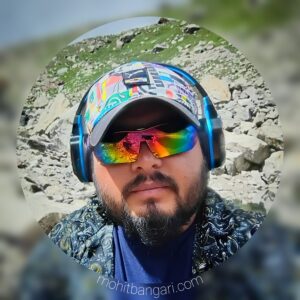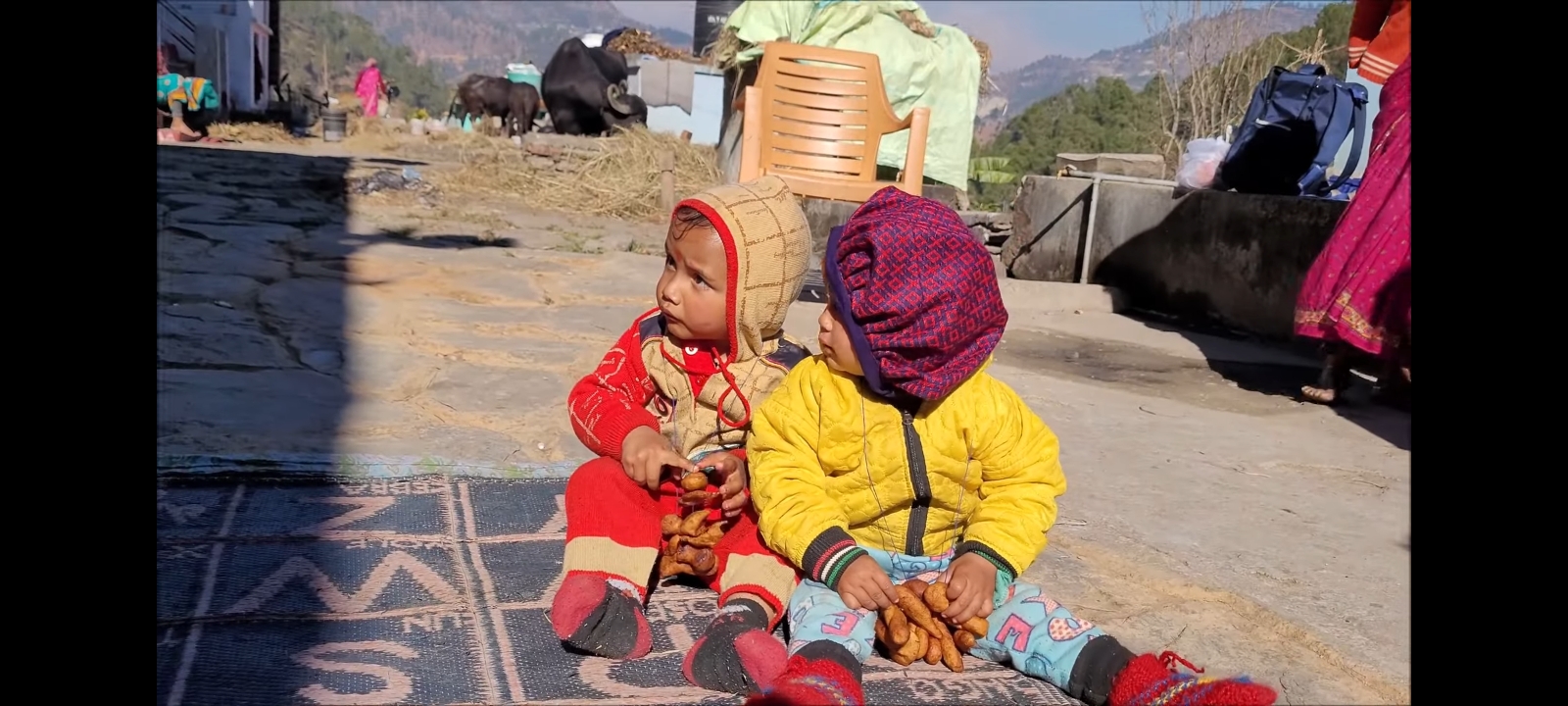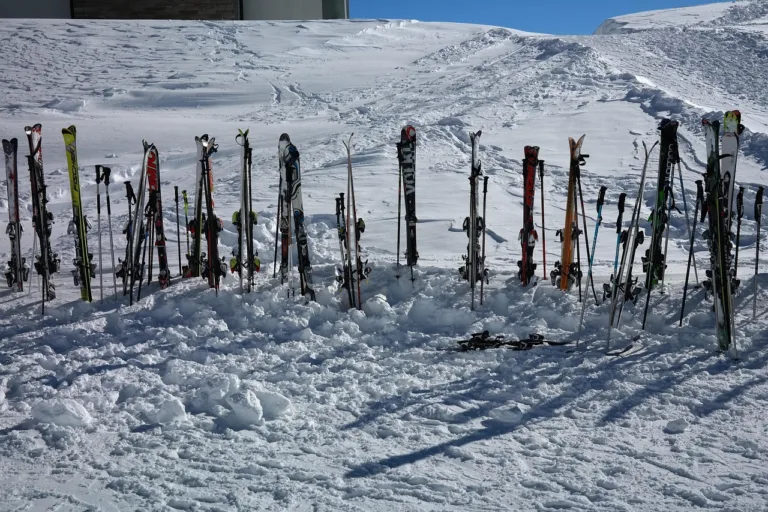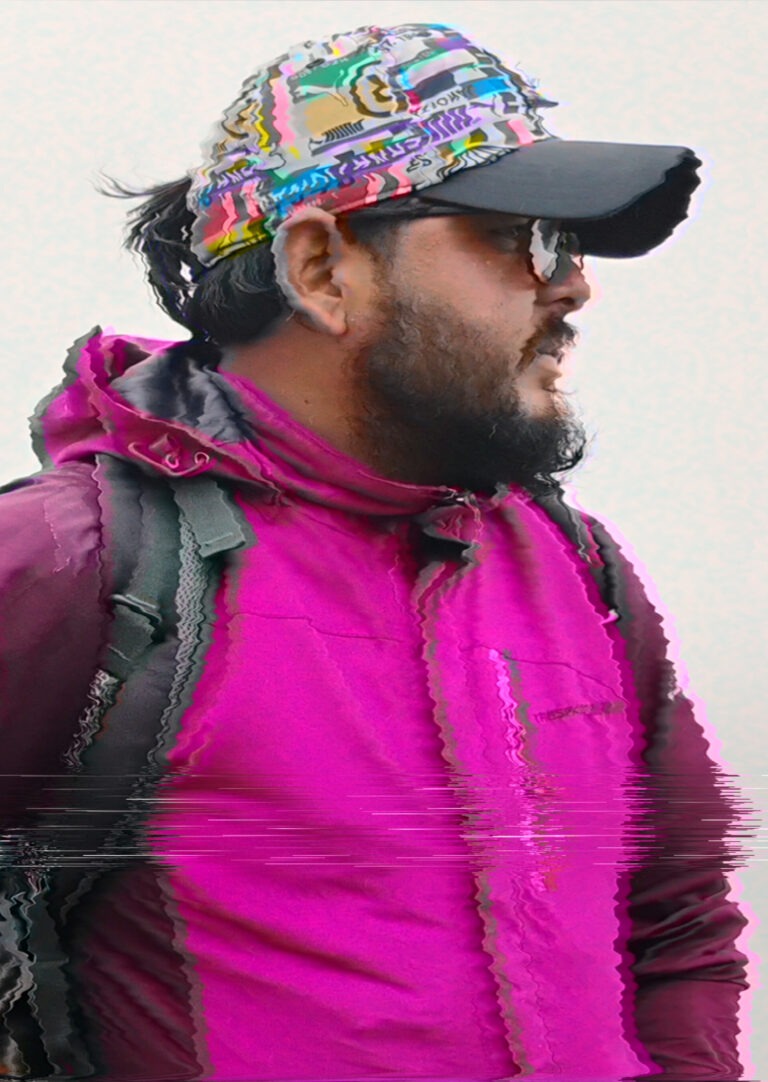By – Mohit Bangari
24 July 2025

Explore Himalaya With Me!!

The Jaunsari are a small ethnic group living in Uttarakhand’s Jaunsar-Bawar region, speaking an Indo-Aryan, Western Pahari language with around 137,000 speakers (2011 census) . Their cultural fabric is rich—festival dances, reverence for Mahasu Devta, and unique customs link them culturally to broader Indo-Aryan heritage.
But does their DNA show they descend from ancient Aryans from Central Asia? Let’s explore what genetic studies say.
Modern South Asians are a blend of:
Ancient Ancestral South Indians (AASI): Local hunter-gatherers from ~40,000 years ago.
Iranian Neolithic farmers: Arrived ~9,500 years ago.
Western Steppe Herder (WSH) groups: Arrived during Bronze Age (~2300–1500 BCE), carrying Indo-European languages.
The Ancestral North Indian (ANI) mix—Steppe + Iranian Farmer—grew from ~6,500–50% of ancestry in many Northern groups.
This “Steppe DNA” is commonly found among Brahmins and North Indians—often 20–50%—showing Indo-Aryan-related migration during Bronze Age .
South Asia’s major Y-DNA haplogroups include:
R1a1: Tied to Steppe herders, often called Indo-Aryans, found abundant in North India.
J2, L, H, R2, etc.
Presence of R1a1 suggests male-line ancestry linked to Steppe migrations—common in north India, though Ra1a sub‑clades differ by region.
There’s no publicly available genetic study targeting Jaunsari people alone.
However, as Western Pahari speakers in Uttarakhand, they likely share genetic traits with neighbouring Indo-Aryan groups:
AASI + Iranian + Steppe ancestry mix.
Probably moderate Steppe ancestry, possibly lower than Brahmin-dominant groups but still present.
Research from broader Himalayan and North Indian communities shows:
Broad Indo-Aryan migrations reached foothill regions during Bronze Age.
Mountain communities like Jaunsari probably absorbed this Steppe genetic influence—either directly or via intermediate Indo-Aryan neighbours.
Lack of strong East Asian components supports their primarily Western Eurasian connections.
Language: Jaunsari speak an Indo-Aryan language—directly linked to those Bronze Age migrations.
Culture: Their rituals, caste-like structure, festivals—reflecting Indo-Aryan patterns.
DNA: Though specific studies are missing, we can reasonably infer a genetic mix including Steppe markers.
Thus, like many Northern Indian hill tribes, Jaunsari are likely partially descended from Steppe-influenced Aryan migrations—but equally from ancient local and farmer groups.
Modern research consensus rejects the idea of a single Aryan “invasion.” Instead, multiple small migrations (post‑1900 BCE) blended with local people, creating the ANI–ASI mix.
This aligns with the recovery of Steppe ancestry among “pure” hunter-gatherers later in time, showing gradual genetic dilution of Steppe markers in today’s populations.
Jaunsari fit the model of many Northern Indian groups—mix of AASI, Iranian, and Steppe with strong Indo-Aryan identity.
They likely show moderate R1a1 presence along with J2, L, H—common in Garhwal.
Without direct DNA data, assumptions must remain cautious—future local genetic studies would help.
Yes, Jaunsari likely share genetic links with Aryan migrations—through language, cultural features, and Steppe DNA ancestor shifts.
Their true identity is a blend: ancient local hunter-gatherers, Western Asian farmers, and Bronze Age steppe migrants.
Specific DNA studies on the Jaunsari are needed for clarity—but general patterns make Aryan link plausible and meaningful.
You can also explore more on Himalayan treks like Darma Valley, Adi Kailash, and others on my website mohitbangari.com, where I share full guides, routes, permit tips and cultural info.
By – Mohit Bangari
24 July 2025
Do you know about Ramman festival of Salud-Dungra village? It’s one of the intangible world cultural heritage of India in UNESCO. You can read a detailed article on this topic here.


Explore Himalaya With Me!!


Explore the beauty and cultures of the Himalayas, from Jammu and Kashmir to Arunachal Pradesh, Tibet and Nepal. My blog shares stories, pictures, and fun articles about this amazing region. Come along on a journey where each mountain has a tale and every valley hides a treasure. Join me as I discover the magic of the mountains together.
Welcome to my Himalayan Adventure!